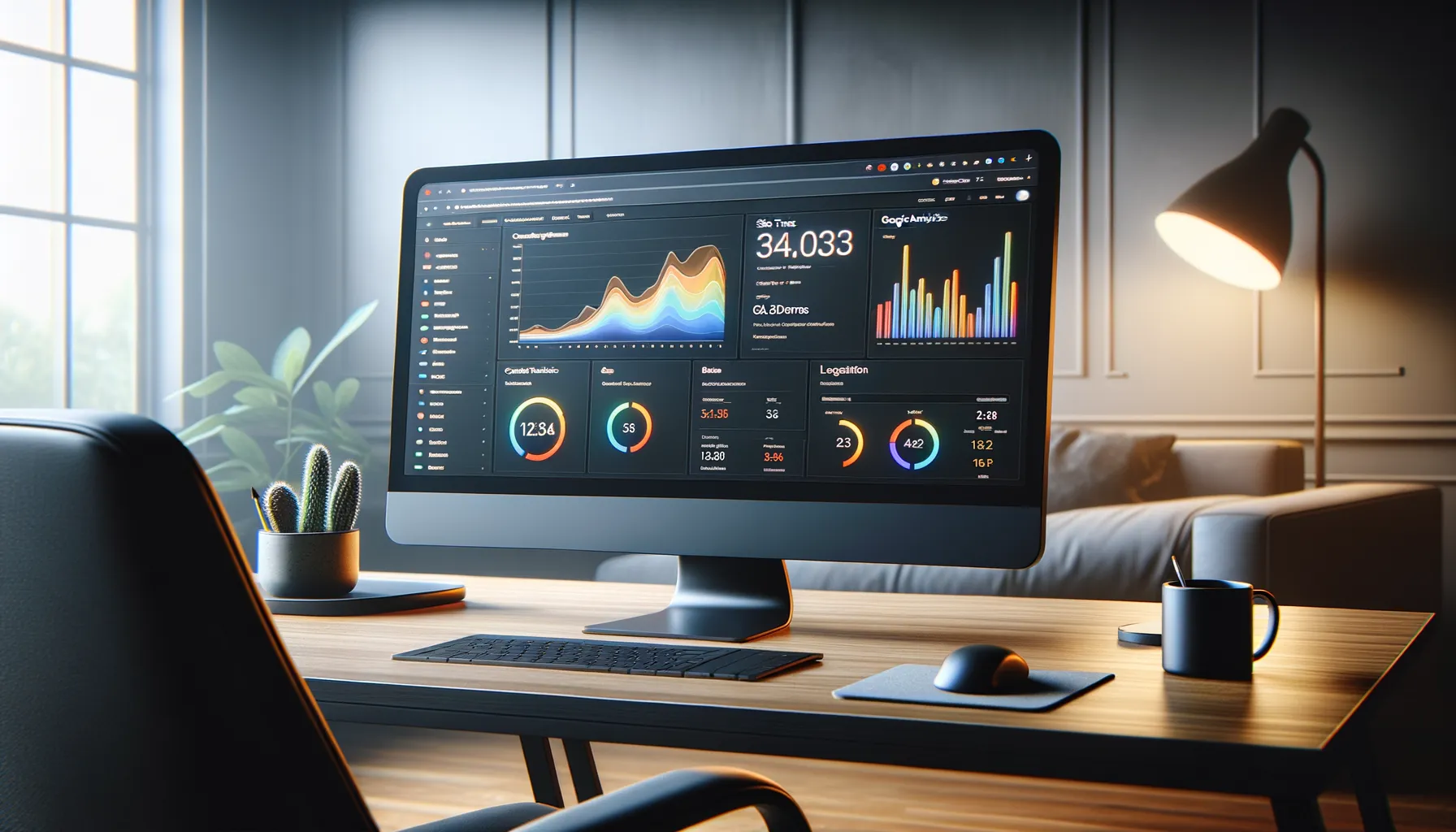Introduction to Google Analytics 4 and Conversion Tracking
Why Understanding GA4 Is a Game-Changer
Imagine having a crystal ball that shows exactly how users interact with your website. That’s what Google Analytics 4 (GA4) offers—a treasure trove of insights about your audience’s behavior, preferences, and actions. Unlike its older sibling, Universal Analytics, GA4 shakes things up by focusing on events rather than sessions. It’s like upgrading from a basic map to a GPS system that pinpoints every turn your users take.
But here’s where the magic happens: conversion tracking. Whether it’s a newsletter signup, a product purchase, or downloading your latest guide, conversions are the lifeblood of any digital strategy. GA4 equips you with the tools to track these golden moments with precision. Think of it as your secret weapon for measuring success and tweaking strategies on the fly.
- Want to know how many people added an item to their cart? GA4 can do that.
- Curious if your “Contact Us” page is working? Conversion tracking nails it down.
In short, GA4 and conversion tracking aren’t just tech tools—they’re your backstage passes to understanding what makes your audience tick.
Setting Up Conversion Events in GA4

Why Conversion Events Are Your Secret Weapon
Picture this: your website is a digital storefront, and every click, form submission, or purchase made is a customer ringing the cash register. To understand these moments of success, you need to set up conversion events in Google Analytics 4 (GA4). These events aren’t just numbers—they’re insights into what’s driving your business forward.
In GA4, tracking conversions is like planting a flag on your most important goals. Want to track newsletter sign-ups? Downloads? Purchases? You can mark them *all* as conversions, and GA4 will spotlight their performance in your data. It’s like giving a VIP badge to the actions that matter most.
How to Add Conversion Events in Just a Few Clicks
Here’s how you make it happen:
- Head to the Events section in your GA4 account under “Configure.”
- Find an existing event or create a new custom one (hint: name it something memorable).
- Slide the toggle next to “Mark as Conversion,” and boom—you’ve claimed that event as business-critical!
The magic? GA4 now automatically tracks this as part of your conversion metrics. It’s simple, yet powerful.
Using Event Parameters to Track Specific Actions

Dive Into the Power of Event Parameters
Ready to step up your conversion tracking game? Let’s talk about the magic ingredients in Google Analytics 4: event parameters. These clever little data nuggets let you capture specific details about user interactions—details that turn a blurry picture into a crystal-clear snapshot.
Think of event parameters as extra layers on a cake. An “Add to Cart” event is great, but wouldn’t it be sweeter if you also knew the product name, price, or even the user’s device? Using event parameters, you can track all this and more.
- Custom parameters: Want to know which promo code triggered the purchase? Done.
- Default parameters: Need info on session duration or user location? GA4’s got your back.
It’s like being handed VIP backstage access to your own analytics show—no detail escapes you. With event parameters, you’re not just tracking actions; you’re decoding the story behind those actions. And trust me, when you see how this insight shapes your strategy, you’ll wonder how you ever lived without it.
How to Use Event Parameters the Smart Way
Here’s where the rubber meets the road. To track these details, you need to define parameters in your GA4 configuration. But don’t let that intimidate you—this isn’t rocket science. For instance, during a “Sign-Up” event, you might set custom parameters to capture the user’s subscription type, referral source, or preferred language.
The real beauty? You can use these parameters in your GA4 reports to segment users. Instead of just knowing that 50 people signed up, you’ll know that 30 chose the free plan and 20 went premium. And if most premium users came via a specific campaign, guess which strategy you should double down on next?
Event parameters aren’t just tools—they’re your secret superpower. Start using them, and watch your data come alive.
Monitoring Conversion Metrics in GA4 Reports

Explore the Goldmine of Conversion Data
Picture this: your website is a bustling marketplace, and every visitor is a potential customer weaving through the stalls. How do you know which paths they take, which products catch their eye, or where they decide to make purchases? That’s where GA4 swoops in like a detective with a magnifying glass. With its conversion metrics, you can dive deep into your website’s interaction patterns and see what actually sparks results.
Start by heading over to the “Reports” tab in GA4—your treasure chest of insights awaits! Here, you’ll find breakdowns of your chosen conversion events and stats like user activity, session lengths, and event counts. Tracking metrics like engagement rate, average session duration, or even scrolling behavior will paint a vibrant picture of user journeys.
- Struggling with an underperforming CTA button? Check the event data to see if it’s being clicked at all.
- Need to understand why your checkout process is abandoned? Analyze the funnel visualization reports for drop-off points.
Every conversion metric tells a story. GA4 doesn’t just crunch numbers—it translates them into actionable strategies for growth. Don’t let your website whisper; make it sing!
Best Practices for Accurate Conversion Tracking
![]()
Mastering Precision in Conversion Tracking
When it comes to tracking conversions, accuracy isn’t just a nice-to-have—it’s your secret weapon. Picture this: you’re mapping out your business strategy, but with fuzzy data, it’s like navigating a jungle without a compass. Let’s fix that.
First things first, always double-check your events are properly defined in GA4. This might sound tedious, but here’s the deal: a single mistyped event name can create chaos in your reports. Consistency is your best friend! For instance, if you’re tracking a “purchase” event, don’t switch between “purchase_complete” and “checkout_success.” Pick one and stick to it like glue.
Debug mode is another lifesaver. Before fully launching a new event, test it relentlessly using the debug tool in GA4. This ensures every data point flows exactly where it should. Think of it as rehearsing for opening night.
And let’s not forget the magic of event parameters. They’re the unsung heroes that add context to your conversions. Want to see which product categories drive the most purchases? Add “category” as a parameter.
- Define clear, standardized naming conventions.
- Test and troubleshoot relentlessly before going live.
- Incorporate relevant parameters for richer insights.
Crafting accurate conversion tracking is like tuning a musical instrument—slightly off, and the whole symphony falters. Get it right, and the data sings!







